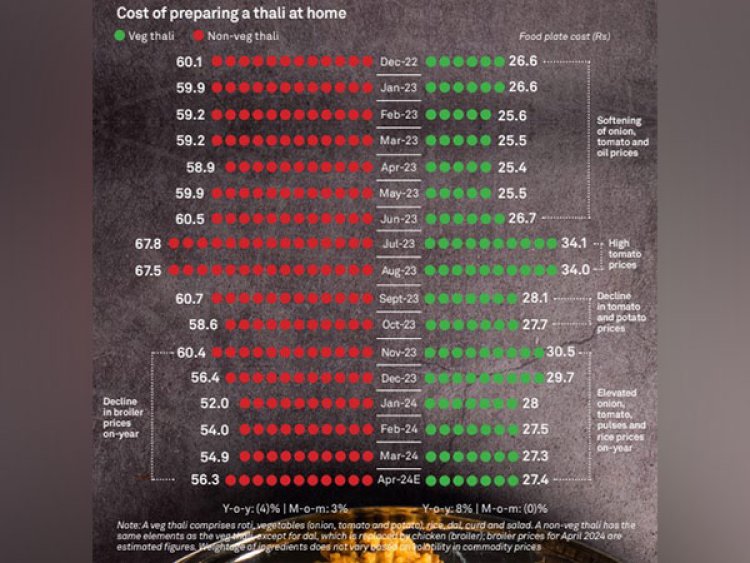Veg thali in India got dearer in April on rising costs of kitchen staples: Crisil report

New Delhi, India: On a yearly basis, the cost of a home-cooked veg thali rose 8 per cent in April, while that of a non-veg thali declined 4 per cent, as per CRISIL Market Intelligence and Analytics' estimates.
The average cost of preparing a thali at home was calculated based on input prices prevailing in north, south, east and west India.
In its report 'Rice Roti Rate', the cost of the veg thali increased due to a surge of 41 per cent, 40 per cent and 38 per cent year-on-year in prices of onion, tomato and potato, respectively, though on a low base of last financial year.
Lower onion arrivals due to a significant drop in rabi acreage and damage to potato crop in West Bengal led to the price increase, Crisil asserted in the report.
Amid lower arrivals, prices of rice (accounting for 13 per cent of the veg thali cost) and pulses (9 per cent) increased 14 per cent and 20 per cent year-on-year, respectively.
Prices of cumin, chilli and vegetable oil declined 40 per cent, 31 per cent and 10 per cent, respectively, preventing further increase in the thali cost.
Coming to the non-veg thali, the decrease in the cost of the non-veg thali was due to 12 per cent year-on-year decline in broiler prices on a high base of last fiscal.
On a monthly basis, however, the cost of the veg thali remained stable and non-veg thali rose 3 per cent.
Veg thali remained flat month-on-month due to a 4 per cent decline in onion prices amid new arrivals coupled with 3 per cent decline in fuel cost, while tomato and potato prices inched up.
The cost of the non-veg thali rose due to an estimated 4 per cent increase in prices of broilers, which account for 50 per cent of the cost, due to higher demand and rising input costs, the report said.
In India, consumer price index (CPI) inflation was 4.9 per cent in March after averaging 5.1 per cent in the preceding two months, following the recent peak of 5.7 per cent in December 2023.
Inflation continues to remain the main concern for the Reserve Bank of India's monetary policy committee members before it goes ahead and loosens its stance on key interest rates.
As per the minutes of the latest monetary policy meeting released recently, there have been several mentions of uncertainties around inflation. Going ahead, food price uncertainties would continue to weigh on the inflation outlook.
The RBI is currently focused on bringing down the inflation to 4 per cent target on a durable basis.
Retail inflation in India is in RBI's two-six per cent comfort level but is above the ideal 4 per cent scenario. Inflation has been a concern for many countries, including advanced economies, but India has largely managed to steer its inflation trajectory quite well.















































